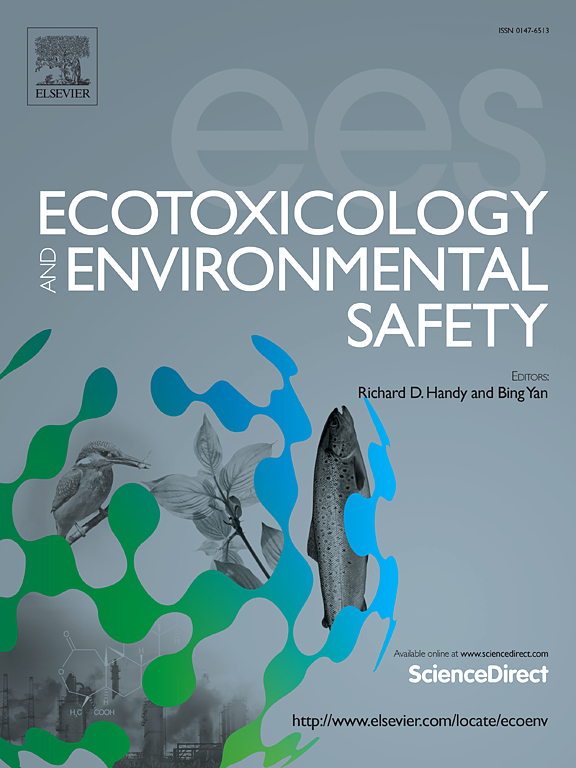Impact of isothiazolinone biocides on gonadal steroid production: Focus on 3β-hydroxysteroid dehydrogenase inhibition
IF 6.2
2区 环境科学与生态学
Q1 ENVIRONMENTAL SCIENCES
引用次数: 0
Abstract
Isothiazolinone biocides have been widely used as disinfectants during the COVID-19 pandemic. However, their effects on gonadal steroidogenesis remain unclear. This study investigated the endocrine-disrupting potential of isothiazolinone biocides, focusing on their inhibition of gonadal 3β-hydroxysteroid dehydrogenases (3β-HSDs). Enzymatic assays, molecular docking, and 3D-QSAR analyses evaluated the impact of seven isothiazolinones on human KGN cell 3β-HSD2 (h3β-HSD2) and rat testicular 3β-HSD1 (r3β-HSD1). Dichlorooctylisothiazolinone, butylbenzo[d]isothiazol-3(2 H)-one, octylisothiazolinone, and benzisothiazolinone inhibited h3β-HSD2 with IC50 values of 4.02, 15.35, 12.12, and 30.55 μM, respectively. These compounds also inhibited r3β-HSD1 with IC50 values of 1.67, 16.51, 13.25, and 29.28 μM, respectively. Whereas, methylchloroisothiazolinone selectively inhibited r3β-HSD1 with IC50 value of 40.11 μM. The compounds acted as mixed/noncompetitive inhibitors, targeting the NAD+ binding pocket. Inhibitory potency correlated with compound hydrophobicity, heavy atom count, and molecular weight. A 3D-QSAR pharmacophore model achieved high predictive accuracy (R2 = 0.98) for h3β-HSD2 inhibition. These biocides suppressed progesterone production in human KGN granulosa tumor cells. The binding free energies were ranged from −6.52 to −7.19 kcal/mol for h3β-HSD2 and −6.0 to −7.04 kcal/mol for r3β-HSD1. The results underscore the endocrine-disrupting capabilities of isothiazolinones via inhibition of critical steroidogenic enzymes, offering insights into their structure-activity relationships and potential side effects.
求助全文
约1分钟内获得全文
求助全文
来源期刊
CiteScore
12.10
自引率
5.90%
发文量
1234
审稿时长
88 days
期刊介绍:
Ecotoxicology and Environmental Safety is a multi-disciplinary journal that focuses on understanding the exposure and effects of environmental contamination on organisms including human health. The scope of the journal covers three main themes. The topics within these themes, indicated below, include (but are not limited to) the following: Ecotoxicology、Environmental Chemistry、Environmental Safety etc.

 求助内容:
求助内容: 应助结果提醒方式:
应助结果提醒方式:


